Fisher Wood Stove Baby Bear Review
- October 16, 2023
- 2 comment
The Fisher brand, with its rich history spanning several decades, revolutionized the wood stove industry in the 1970s. It combined craftsmanship with innovation, resulting in wood stoves that not only looked good but also performed exceptionally well. Among its lineup, the Fisher Wood Stove Baby Bear stands out as a testament to what made Fisher Wood Stoves immensely popular.
The Baby Bear, exuding a vintage charm, stands true to its name as the most petite model in the cast iron Bear series. While exact dimensions can slightly deviate based on specific manufacturing periods, this stove is meticulously designed to nestle perfectly within tighter spaces, ensuring no compromise on its robust heat output. Its capacity to radiate warmth makes it an ideal choice for small to mid-sized rooms, offering a snug haven even during the chilliest of months. In terms of EPA certification, it’s pivotal to highlight that many of these vintage stoves emerged before the establishment of contemporary EPA standards. Thus, they might not bear the certifications we see in today’s more modern counterparts.
Performance Metrics
- The Baby Bear, true to its name, is the smallest among the three stoves, tipping the scales at a modest 245 pounds. It features a single door with measurements of 8 inches in width and 9 inches in height. Designed with a single air intake, it comfortably accommodates an 18″ log and has the prowess to heat areas up to 1250 SF.
- Despite its compact stature, the Baby Bear promises an enviable heat output, sufficient to efficiently warm a room. Although specific output figures can deviate, users can generally anticipate a stable and potent heating experience.
- The Fisher design, notably characterized by its manual dampers, facilitates prime wood usage. This means you’re getting optimal warmth for every piece of wood you burn.
A Personal Experience with the Fisher Wood Stove Baby Bear
Winter in Maine has its own charm. Snow-capped pine trees, the stillness of the frozen lakes, and the comfort of a warm, cozy home after a long day outdoors. As someone who grew up in a modern city apartment, my move to a quaint cabin in Maine was both an adventure and a challenge. One of the first things I noticed in my new home was the Fisher Wood Stove Baby Bear prominently positioned in the living room.

At first, I was apprehensive. The city life had made me accustomed to instant heaters. However, the very first time I lit up the Baby Bear, my apprehensions melted away, quite literally. The stove, despite its compact size, warmed up the room efficiently and quickly. The gentle crackling of the wood and the radiant heat instantly created a comforting ambiance that no modern heater could replicate.
But it wasn’t just about the warmth. The Fisher Wood Stove Baby Bear became an experience. I found solace in the ritual of selecting the right log, adjusting the single air intake, and watching the flames dance. On particularly chilly nights, the stove’s ability to take up to an 18-inch log meant I could enjoy uninterrupted warmth without the need to frequently refuel.

Maintenance, though a tad more hands-on due to the absence of an ash pan, became a meditative process for me. Cleaning and ensuring the stove was in its prime condition was not a chore but an essential part of my winter routine.
Perhaps, the most surprising aspect was the conversations the Baby Bear sparked. Friends, family, and even the occasional delivery person would often share their experiences or fond memories associated with Fisher Stoves. It became evident that the Baby Bear wasn’t just a heating appliance but a piece of history, a conversation starter, and a comforting presence in my home.
A year has passed since, and as winter approaches again, I find myself eagerly anticipating the evenings spent with my Fisher Wood Stove Baby Bear. It’s a reminder that sometimes, the old ways aren’t just nostalgic, they are genuinely timeless.
Pros and Cons
Pros:
- Durability: Fisher stoves have long held a reputation for their durability, and the Baby Bear is no exception. Crafted with a robust thick metal construction, its resilience is further accentuated by the firebrick lining. This combination ensures the stove remains operational for years, if not decades, providing consistent warmth to homes season after season.
- Design: A hallmark of the Fisher brand is the iconic “Fisher” emblem, gracefully embossed amidst a backdrop of pine trees. This isn’t merely branding; it’s an embodiment of the stove’s vintage aesthetic and a testament to Fisher’s commitment to timeless design. Every glance at this stove reminds one of a bygone era, where craftsmanship was paramount.
- Efficiency: One of the standout features of the Fisher stoves, including the Baby Bear, is the manual dampers. These dampers allow users to regulate airflow and combustion, giving them a more hands-on approach to their heating needs. By fine-tuning the burn rate, users can extract the maximum heat from every log, ensuring optimal fuel efficiency and consistent warmth.
Cons:
- Maintenance: A notable drawback of the Baby Bear, and older Fisher models in general, is the absence of an ash pan. This means ash accumulation requires manual cleanup, which can be a bit tedious. Regular maintenance is crucial to ensure the stove’s efficiency, and this manual ash removal might be a deterrent for some users accustomed to more modern conveniences.
- EPA Standards: A critical aspect potential buyers should be aware of is the stove’s adherence to modern emissions standards. The Baby Bear, like many of its contemporaries, was manufactured before the onset of today’s stringent EPA regulations. This means it might not align with current emissions benchmarks, which could be a consideration for those particularly environmentally conscious or in areas with strict emissions guidelines.
Comparables and Suitability
When looking at the price point, the Baby Bear offers value for money. It’s an affordable option compared to some modern stoves, yet it doesn’t compromise on quality. However, if you’re comparing it with other contemporary wood stoves, it’s essential to factor in features like ash pans or automated dampers, which the Baby Bear might lack.
Evolution and Improvements
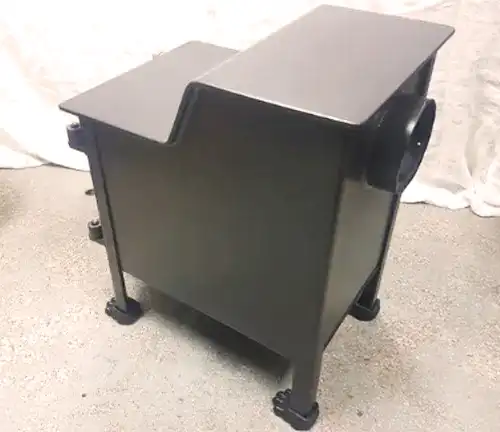

The Fisher brand didn’t remain stagnant. Over the years, the stoves have seen a series of refinements, adapting to the needs of the consumers and evolving technological advances. From the initial design of the Papa Bear, the Fisher series expanded its offerings, introducing the Mama Bear and then the more compact Baby Bear. Each iteration retained the core essence of durability and efficiency while fine-tuning aspects for a better user experience. Moreover, the brand has always been responsive to feedback, often incorporating suggestions into subsequent models. This adaptability ensures that while they maintain their vintage charm, Fisher stoves are far from outdated in functionality.
Key Design Choices:
- Thick Metal Construction: At the heart of Fisher Stoves’ durability lies the choice to use thick metal in their construction. This design choice ensures optimal heat retention and long-lasting performance.
- Firebrick Lining: The inclusion of firebrick lining not only aids in heat retention but also serves as a protective layer, enhancing the stove’s longevity.
- Manual Dampers: This intentional design choice offers users unparalleled control over their heating. It embodies Fisher’s commitment to providing an authentic wood-burning experience, where the user feels connected to the process.
- Iconic Embossing: The choice to emboss the “Fisher” logo amidst pine trees isn’t merely aesthetic. It’s a nod to the brand’s legacy and the forests that provide the fuel for these stoves. This design element encapsulates Fisher’s reverence for nature and its commitment to craftsmanship.
The Baby Bear, like all Fisher stoves, is a product of thoughtful design choices and an evolutionary journey geared towards perfection. While it carries the weight of a vintage legacy, its design choices ensure it remains relevant and highly functional in contemporary settings.
Fisher Bear Series
In the realm of wood-burning stoves, Fisher has carved out a name for itself as a bastion of reliability and craftsmanship. The Bear Series, in particular, stands as a testament to Fisher’s dedication to delivering high-quality heating solutions tailored to various needs. From the robust Papa Bear to the compact Baby Bear, this series caters to diverse heating requirements while ensuring consistent performance.
Papa Bear
This was the first stove manufactured in the Fisher Bear series.
- Air Intakes: Two
- Log Capacity: Up to 30 inches
- Heating Capacity: Heats up to 2250-square feet
- Weight: A robust 486 pounds
- Front Door Dimensions: 10 inches wide by 11 inches tall
Mama Bear
The second in line in the Fisher Bear series.
- Air Intakes: Two
- Log Capacity: Up to 24 inches
- Heating Capacity: Heats up to 1750 square feet
- Weight: Weighing in at 410 pounds
- Front Door Dimensions: 10 inches wide by 11 inches tall (identical to the Papa Bear but with a lighter overall weight)
Baby Bear
The third and most compact stove in the series, living up to its “Baby” moniker.
- Air Intake: One
- Log Capacity: Up to 18 inches
- Heating Capacity: Heats up to 1250 square feet
- Weight: A more portable 245 pounds
- Front Door Dimensions: 8 inches wide by 9 inches tall
Fisher Wood Stove Baby Bear Safety Guide
Safety is paramount when using any wood-burning stove. The Fisher Wood Stove Baby Bear, while a reliable and efficient heat source, requires certain safety precautions to ensure the well-being of your household. Here’s a comprehensive safety guide tailored for this particular stove:
- Installation – Ensure the stove is installed according to the manufacturer’s guidelines and adheres to local building codes. It’s a good idea to hire a professional for installation to ensure safety and efficiency.
- Clearance – Ensure there’s sufficient clearance between the stove and any combustible materials, like walls, furniture, or curtains. If unsure, consult the manual or a professional.
- Use a Hearth Pad – Always place the Baby Bear on a non-combustible surface like brick, stone, or a certified hearth pad. This will prevent the floor from overheating and reduce the risk of fires.
- Operate with Care – Always open the damper before starting a fire. Never overload the stove with wood. Ensure the door is tightly closed during operation.
- Keep Children and Pets Away – The exterior of the stove becomes extremely hot during use. It’s crucial to supervise children and pets and ensure they don’t come into contact with the stove.
- Use a Screen – If your Baby Bear model doesn’t have a glass door, consider using a fire screen when the door is open to prevent sparks or embers from escaping and igniting nearby materials.
- Avoid Flammable Liquids – Never use gasoline, lighter fluid, or any flammable liquid to start or freshen up the fire in the stove.
- Regular Maintenance – Clean and inspect your stove regularly. Check the chimney for creosote buildup, as it’s a fire hazard. Replace worn-out gaskets and ensure that all parts, including the damper, are functioning correctly.
- Carbon Monoxide Detector – Even though carbon monoxide is primarily an indoor concern, ensure you have a functioning carbon monoxide detector near the stove. This will alert you if there’s any dangerous buildup.
- Fire Extinguisher – Keep a working fire extinguisher nearby, and ensure all household members know how to use it. It’s a good idea to have a smoke alarm installed in the same room as the stove, as an added precaution.
- Burn Only Dry, Seasoned Wood – Wet or green wood can cause excessive smoke and creosote buildup, which are fire hazards. Using dry, seasoned wood ensures a cleaner and safer burn.
- Ensure Proper Ventilation – Ensure that the room where the stove is installed is well-ventilated. This prevents the buildup of harmful gases and ensures efficient combustion.
- Cool Down Before Cleaning – Wait for the stove to cool completely before attempting any cleaning or maintenance.
Fisher Wood Stove Baby Bear Maintenance Guide
Maintaining your Fisher Wood Stove, especially a classic like the Baby Bear, is essential for its longevity, optimal performance, and safety. Regular maintenance ensures that you get the best out of your wood stove while also keeping your home safe. Here’s a comprehensive maintenance guide for the Fisher Wood Stove Baby Bear:
- Regular Cleaning – The Baby Bear doesn’t come with an ash pan, so you’ll need to let the fire die down or cool off completely before using a shovel or brush to clean out the ashes. Store the ashes in a metal container with a tight-fitting lid. Keep the container on a non-combustible floor or on the ground, away from all combustible materials. If your Baby Bear has a glass door, clean it using a soft cloth and a glass cleaner or a mixture of vinegar and water. Avoid using abrasive materials, which can scratch and damage the glass.
- Inspecting and Replacing the Gasket – Over time, the door gasket might wear out. It’s essential to check the gasket regularly for signs of wear or damage. If it’s not sealing correctly, replace it to ensure efficient burning and prevent unnecessary air intake.
- Checking the Damper – Ensure the damper moves freely and adjusts as it should. If it’s sticking or not functioning correctly, it might need cleaning or replacement.
- Chimney Cleaning – Over time, creosote, a flammable substance, can build up in the chimney. It’s recommended to inspect and clean your chimney at least once a year or after every cord of wood burned. This will prevent chimney fires and ensure efficient airflow.
- Exterior Maintenance – Over time, the paint on the Baby Bear might chip or wear out, especially if it’s an older model. Consider repainting it with high-temperature stove paint to prevent rust and keep it looking fresh. Check for any signs of rust. If you spot any, clean it off with a wire brush and then repaint the area.
- Inspect Firebricks and Replace them if Necessary – The firebricks inside the stove protect its interior from the heat. If they’re cracked or damaged, they should be replaced to ensure the stove’s longevity and safety.
- Burn Dry, Seasoned Wood – This might sound like a usage tip, but it’s also a maintenance one. Burning wet or “green” wood can lead to more creosote buildup, meaning more frequent cleanings. Dry, seasoned wood will burn cleaner and more efficiently.
- Annual Professional Inspection – It’s always a good idea to have a professional inspect your stove once a year. They can catch issues you might miss and ensure your stove is safe and in top working order.
Final Thoughts
The Fisher Wood Stove Baby Bear is a blend of nostalgia and efficiency. Its design speaks of a bygone era, while its performance remains relevant even today. For those who appreciate classic craftsmanship without the hefty price tag of many modern units, this is a solid choice. However, always check local regulations before installation. Whether you’re looking for efficient heating or a piece of history, the Baby Bear doesn’t disappoint.
If you are interested in buying a Fisher Baby Bear Wood Stove Check it Here!
FAQs
- What makes the Baby Bear unique in the Fisher Bear Series?
The Baby Bear is the most compact model in the Bear series, designed specifically for smaller spaces. While it maintains the same quality and design ethos as its larger counterparts, it’s optimized for heating smaller to mid-sized rooms. - How does the Baby Bear compare in weight to other stoves in the Bear Series?
The Baby Bear weighs only 245 pounds, making it the lightest in the series, compared to the Mama Bear’s 410 pounds and the Papa Bear’s 486 pounds. - Are Fisher stoves, including the Baby Bear, EPA-certified?
Many Fisher stoves, including the Baby Bear, were manufactured before the establishment of modern EPA standards, so they might not carry the certifications found on contemporary models. - Why does the Baby Bear have a single air intake compared to two in other models?
Given its compact design, a single air intake suffices for the Baby Bear, ensuring optimal combustion and efficiency for its size. - Is the iconic “Fisher” embossed design present in all Fisher wood stoves?
Yes, the “Fisher” embossed amidst pine trees is a signature design element across many Fisher wood stoves, symbolizing the brand’s commitment to quality and its nod to timeless design. - How often should I clean the Baby Bear given it doesn’t have an ash pan?
While it varies based on usage, regular maintenance, including ash removal, is recommended for optimal performance. Given the lack of an ash pan, users should inspect the stove more frequently and clean it as needed. - What’s the maximum log size the Baby Bear can accommodate?
The Baby Bear is designed to handle logs up to 18 inches in length. - Can I use the Baby Bear as a primary heating source for my home?
While the Baby Bear is efficient, its heating capacity is up to 1250 square feet. Depending on the size and insulation of your home, it can serve as a primary or supplementary heat source. - Are there any modern upgrades or modifications recommended for vintage Fisher wood stoves?
For those wishing to retain the vintage charm but enhance functionality, some owners opt for adding secondary combustion systems or retrofitting to improve efficiency. However, it’s essential to consult with a professional before making any modifications. - Why are Fisher wood stoves, like the Baby Bear, still popular after so many years?
The combination of durable construction, timeless design, and efficient heating makes Fisher wood stoves, including the Baby Bear, sought-after even today. Their legacy in the wood stove industry and the nostalgic value they hold add to their enduring appeal.
The Fisher Wood Stove Baby Bear stands as a testament to timeless craftsmanship, balancing vintage charm with functionality. As you contemplate the warmth and ambiance it could bring to your space, we’d love to hear from you. What are your experiences with Fisher stoves, or perhaps you have questions that weren’t covered in our review? Either way, your insights and queries enrich our community. Please share your thoughts in the comments below. Every perspective adds value, and who knows, your comment might just be the guidance someone else needs. Remember, every stove has a story, and we’re eager to hear yours!

David Murray
Forestry AuthorI'm David Murry, a forestry equipment specialist with a focus on chainsaw operation. With over 13 years of experience, I've honed my skills in operating and maintaining a wide range of machinery, from chainsaws to log splitters. My passion for the outdoors and commitment to sustainable forestry drive my work, which emphasizes safety, efficiency, and staying updated with industry advancements. Additionally, I'm dedicated to sharing my expertise and promoting environmental awareness within the forestry community.
2 comments
Hi David, I noticed that the pictures of the Fisher stoves you have included here are pictures of my stoves taken from my website. If you intend to use them I would appreciate it if you could credit the source and include a link to my website. https://www.wainfleetradingpost.com/collections/fisher-wood-stoves I have many of these stoves available for purchase as well as an extensive information page regarding Fisher wood stove specifications and history. I would be happy to include a link on my website so that my visitors can easily find your review. Thank you Derek


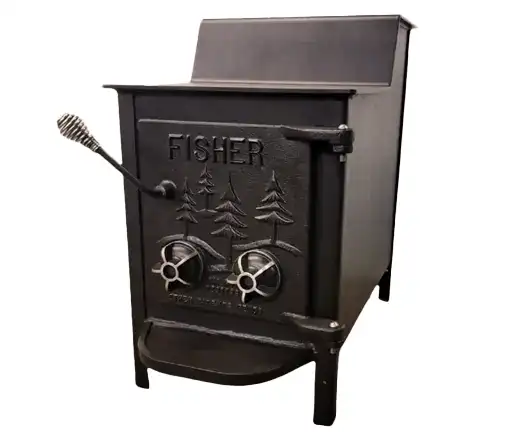
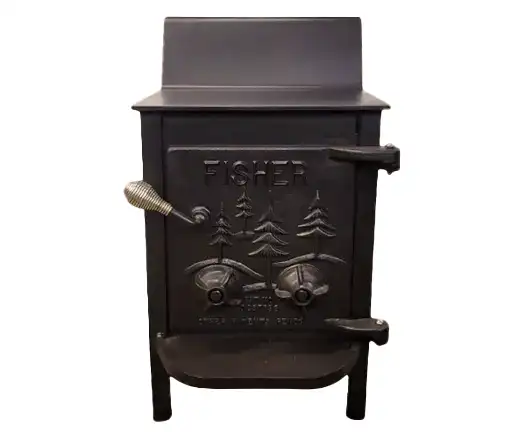






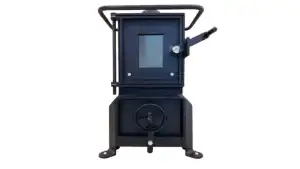
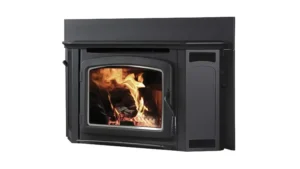


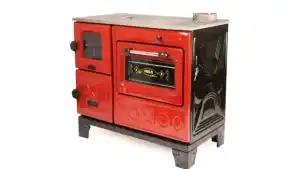

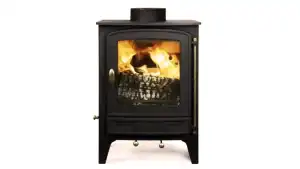
I grew up using the Baby Bear stove. It did it's job well. Despite its small size it held coals all night. I sure do miss wood heat.
Paul
January 26, 2024 5:00 pm